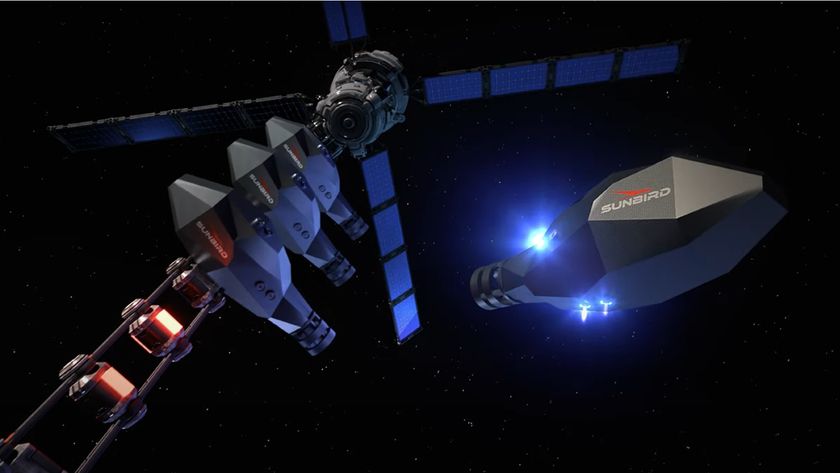NASA's Best Missions to Get High Definition Treatment
NASA's greatest missions are about to get a high definition makeover by the Discovery Channel this year to commemorate the U.S. space agency's 50thanniversary.
"When We Left Earth: The NASA Missions," a miniseries that follows Discovery?s popular "Planet Earth" series, will showcase 50 years of space exploration. The series includes some never-before-seen film culled from 500 hours of footage plucked from NASA's archives and carefully restored for broadcast in high definition (HD).
"No gimmicks, no photoshopping, no CGI," said John Ford, president and general manager of Discovery Channel, in a preview webcast from the newly opened Davidson Center for Space Exploration in Huntsville, Alabama.
Moonwalkers Buzz Aldrin, Apollo 11, and Charlie Duke, Apollo 16, were also on hand to discuss their experiences as Apollo astronauts.
"I was so excited during the entire 11 days [of the mission] that it bubbled up," Duke said, describing himself and fellow Apollo 16 astronaut John Young as "two little five-year-olds running around" and comparing their antics with those of his grandsons.
Duke also noted that one grandson owns an iPod with "a million times more computational power than what we had" on the lunar landing missions, which launched between 1969 and 1972.
"We did pretty well with what we had," Aldrin added.
Sign up for the Live Science daily newsletter now
Get the world’s most fascinating discoveries delivered straight to your inbox.
A 10-minute preview clip of the upcoming Discovery Channel series highlighted the thrill and danger of the Apollo missions set against the Cold War's space race, with a stunning sequence of the 36-story Saturn V rocket roaring spaceward while burning 20 tons of fuel per second.
NASA will return to the moon with its Ares rockets and Orion spacecraft that are slated to replace the aging space shuttle. However, the shuttle's retirement in 2010 leaves a five-year gap in spaceflight capabilities until the new spacecraft come online.
"I would hope we have the national will and political will to get through this dry spell while we point back towards the moon," Duke said. He favored a "balanced" NASA approach between manned missions and unmanned robotic exploration.
Aldrin emphasized the need for "parallel access to low earth orbit" with private space ventures helping fill the spaceflight gap. He also pushed for a more aggressive timetable that looked beyond Earth orbit and the moon towards Mars.
"Mars is where we need permanence," Aldrin said. "We need to go to the moon to learn how to go to Mars, but to establish [lunar] permanence will maybe absorb too many resources."
Both astronauts observed that space exploration has not only pushed the technological envelope, but has also benefited ordinary Americans and people across the world.
"There's not one area of our life that has not been touched by space age technology," Duke said.
Although the astronauts were enthusiastic when asked about audiences getting to view space exploration in HD, Aldrin noted one downside.
"We don't have makeup people who go along with our crew," Aldrin said.
"When We Left Earth: The NASA Missions" will air as a six-hour special on consecutive Sundays, June 8, 15, and 27.













